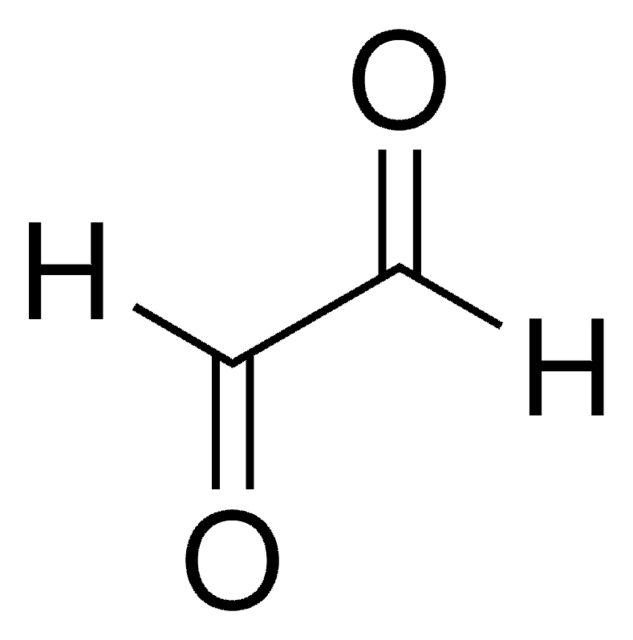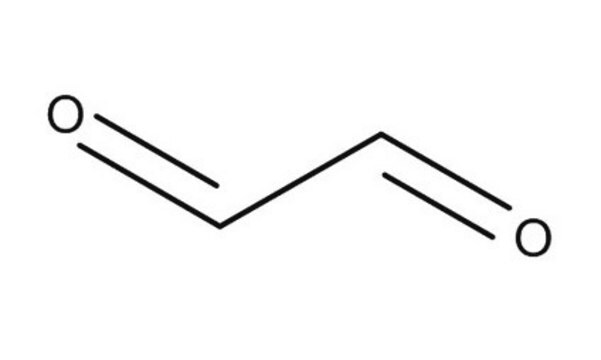12-1370
Glyoxal solution
CP, 40 wt. % in H2O
Synonym(s):
Ethanedial, Oxalaldehyde
About This Item
Recommended Products
grade
CP
availability
available only in Japan
concentration
40 wt. % in H2O
SMILES string
[H]C(=O)C([H])=O
InChI
1S/C2H2O2/c3-1-2-4/h1-2H
InChI key
LEQAOMBKQFMDFZ-UHFFFAOYSA-N
Looking for similar products? Visit Product Comparison Guide
Other Notes
Caution
Signal Word
Warning
Hazard Statements
Precautionary Statements
Hazard Classifications
Eye Irrit. 2 - Muta. 2 - Skin Irrit. 2 - Skin Sens. 1
Storage Class Code
10 - Combustible liquids
WGK
WGK 1
Flash Point(F)
Not applicable
Flash Point(C)
Not applicable
Personal Protective Equipment
Certificates of Analysis (COA)
Search for Certificates of Analysis (COA) by entering the products Lot/Batch Number. Lot and Batch Numbers can be found on a product’s label following the words ‘Lot’ or ‘Batch’.
Already Own This Product?
Find documentation for the products that you have recently purchased in the Document Library.
Our team of scientists has experience in all areas of research including Life Science, Material Science, Chemical Synthesis, Chromatography, Analytical and many others.
Contact Technical Service






